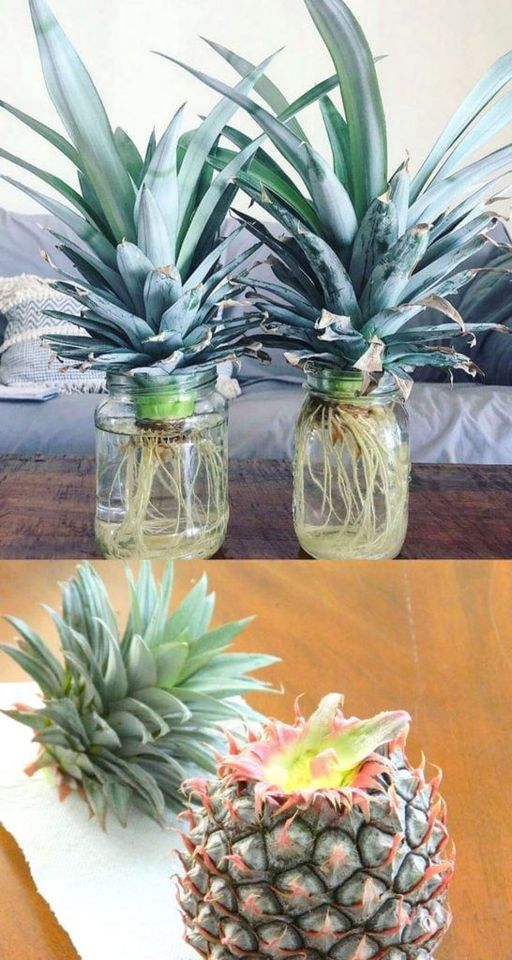This year, I’m working hard to transform my small patch of lawn into a productive food forest—or at least the beginnings of one. (They say Rome wasn’t built in a day, and I’m pretty sure they say a forest doesn’t grow in a year—but the foundation can certainly be laid!)
If I bought a bunch of plants to fill the space, I’d go bankrupt pretty quickly. Where possible, I try to fill the space with plants I’ve grown from scratch—or rather, from cuttings, seeds, roots, and runners.

It’s not possible with every plant I’d like, but there are many possibilities.
I love the idea of using “waste” to create something new. And I love watching nature at work. One of my favorite things I’m currently growing is pineapples. They’re magical.
I thought I’d explain to you how.
Pineapples are a tropical plant, but they grow successfully and bear fruit in Perth (where I live). They’re also a pretty fun plant and look good whether they bear fruit or not—but having plants that could potentially also feed me in the future is a winner.

Even if you don’t live in a Mediterranean or tropical climate, you can still grow pineapples, but they’ll need to be kept indoors during the cooler months. I’ve read that it’s possible to get them to bear fruit, but I imagine that’s a lot more work.
Still, they’re a great houseplant if you live in colder climes. A cool experiment. A good conversation starter. An excellent gift.
Here’s how to breed one.
Step-by-Step Guide to Growing a Pineapple
You’ll need a pineapple with a green, spiky head attached. If you’re lucky, you’ll find one with more than one head, or possibly a main head and side shoots. You can grow one plant for each head, so the more the better.

This pineapple has a main head and a small side shoot. Two future pineapple plants for the price of one.
Next, chop off the head—or rather, separate the fruity part from the green, spiky part. Try to cut between the fleshy part of the pineapple and the head, so no fruit gets stuck to the green part of the head. (The fruit will rot, which is bad for the plant.)
Pull back some of the lower outer leaves. You may see roots or just small stumps growing into roots. Pull back enough to create a small “stem.”
Place the pineapple on a glass filled with water, making sure the blunt root part is submerged. The leaves can help support the plant on top of the glass.
If you hang the pineapple instead of placing it in a saucer, the roots have room to grow downward.
The pineapple may sprout roots immediately, or it may not sprout at all for a while. (I’ve tried two varieties: one sprouts immediately, and the other takes forever.)
Ensure the water is topped up so the root part stays submerged. I haven’t found it necessary to change the water.
Eventually, roots appear.
I wait until the roots reach the bottom of the jar (we are talking a few weeks at least), and then I repot in some well draining soil. Eventually I plan to put mine in the ground, but they can be grown in containers.
You have a pineapple plant!
More things to know about growing pineapples
Pineapples do not grow or fruit quickly. Growing a pineapple this way will take 24 months to fruit, and another 6 months for the fruit to develop. Plus one plant grows one pineapple, so you won’t be inundated in pineapples.
Another thing to know about pineapples: they take most of their nutrients through their leaves, not the soil. Feeding with worm castings, soluble seaweed solution or another natural feed is better than synthetic fertilisers which may burn the leaves and damage the plant.
Finally, you might come across information that tells you that you don’t need to bother getting the pineapple head to root before planting, and you can simply stick the freshly cut head straight into a pot or in the ground. Personally, I love watching the magic of roots appearing right before my eyes.

That would be lost if I simply stuck the head in some soil, which is why I prefer this method.


